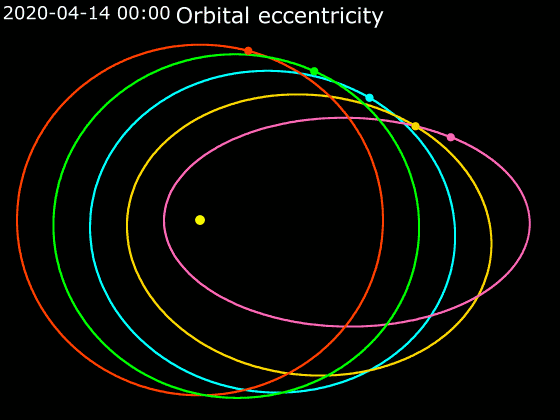A habitable zone, shown here in green, is defined as the region around a star where liquid water, an essential part of life as we know it, could possibly exist. (NASA-JPL/Caltech)
NASA
Of all known planets, Earth is as hospitable as any planet could be – or is it? As Jupiter’s orbit changes, a new study shows Earth could be more hospitable than it is today.
When a planet has a perfectly circular orbit around its star, the distance between the star and the planet never changes. However, most planets have “eccentric” orbits around their stars, meaning the orbit is oval in shape. As the planet gets closer to its star, it receives more heat, which affects the climate.
Using detailed models based on data from the solar system as it is known today, researchers at UC Riverside created an alternative solar system. In this theoretical system, they found that a more eccentric orbit of giant Jupiter would in turn cause large changes in the shape of Earth’s orbit.
“If Jupiter’s position stays the same but the shape of its orbit changes, it could actually increase the habitability of this planet,” said Pam Vervoort, UCR Earth and planetary scientist and lead author of the study.
Between zero and 100 degrees Celsius, the earth’s surface is habitable for several known life forms. If Jupiter made Earth’s orbit more eccentric, parts of the Earth would sometimes come closer to the Sun. Portions of the earth’s surface that are now below freezing would become warmer, pushing temperatures into the habitable range.
This finding, now published in the Astronomical Journal, turns two long-held scientific assumptions about our solar system on their head.

Different orbital eccentricities around a central star. (NASA/JPL-Caltech)
“Many are convinced that Earth is the epitome of a habitable planet and that since Jupiter is a massive planet, any change in its orbit could only be bad for Earth,” Vervoort said. “We show that both assumptions are wrong.”
The researchers want to apply this knowledge to the search for habitable planets around other stars, so-called exoplanets.
“The first thing people look for when looking for exoplanets is the habitable zone, the distance between a star and a planet, to see if there is enough energy on the planet’s surface for liquid water,” said Stephen Kane, UCR astrophysicist and study co-author.
During its orbit, different parts of a planet receive more or less direct rays, causing the planet to have seasons. Parts of the planet can be comfortable in one season and extremely hot or cold in another.
“Having water on its surface is a very simple first metric, and it doesn’t take into account the shape of a planet’s orbit or seasonal variations that a planet might experience,” Kane said.
Existing telescopes are capable of measuring a planet’s orbit. However, there are additional factors that could affect habitability such as: B. the extent to which a planet is tilted towards or away from a star. The part of the planet tilted away from the star would receive less energy, making it colder.
The same study found that if Jupiter were positioned much closer to the Sun, it would produce an extreme tilt on Earth, causing large parts of the Earth’s surface to fall below freezing.
It’s more difficult to measure a planet’s tilt or mass, so researchers would like to work on methods that help them estimate those factors as well.
Ultimately, the movement of a giant planet is important in making predictions about the habitability of planets in other systems and in understanding its influence on this solar system.
“It’s important to understand how Jupiter has affected Earth’s climate over time, how its effect on our orbit has changed us in the past, and how it could change us again in the future,” Kane said.
System Architecture and Planetary Skewness: Implications for Long-Term Habitability, The Astronomical Journal
astrobiology
#Earths #surface #harbor #life #Astrobiology


Leave a Comment